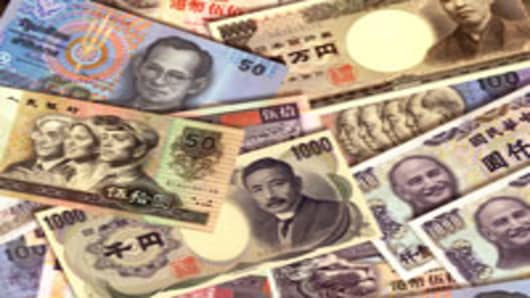Asian economies have stumbled in recent months. High inventories, the lagged effects of tightening in China, and lackluster growth in the West have all taken their toll. Inflation, as a result, has slowed.
But this is a mere cyclical dip in the structural ascent of price pressures across the region. Investors and policymakers alike shouldn’t rest too easy. With another stimulus being applied by the world’s major central banks, and Asia’s return to more vigorous growth in the coming quarters, inflation will again become a cause for worry.
It is easy to lose sight of the bigger picture. The world economy is stuck in a rut. China no longer has its usual swagger, the U.S. dangles over the “fiscal cliff,” and Europe is lost in contemplation of its enduring problems. Japan, meanwhile, is greying fast, with the occasional stimulus merely painting over its structural cracks. Why, then, should anyone worry about inflation?
First, the cycle masks broader structural trends. Emerging markets, led by Asia, are on the rise. According to the International Monetary Fund, they will account for more than 50 percent of world gross domestic product (GDP) for the first time this year. Only 12 short years ago, their share was only 37 percent. Granted, this is measured on a purchasing power basis, but this is ultimately what matters for global inflation. The stagnation in the West is thus no longer enough to hold world prices at bay.
Consider a simple example. In 2000, a percentage point increase in U.S. growth added 0.23 percent to world demand, while a percentage point increase in China’s economycontributed a mere 0.07 percent. Today, the numbers are converging rapidly. A one percentage point rise in U.S. GDP now contributes about 0.19 percent to world GDP, while China adds 0.15 percent.
Assuming that the U.S. economy will grow by 2 percent this year, and China, say, by 7.5 percent (Beijing’s official target), the contribution of the latter, despite being deemed a disappointment by financial markets, will eclipse that by the U.S. by a factor of at least 3. Even in U.S. dollar terms, the incremental increase in world demand accounted for by China is almost double that by the U.S.
Second, the composition of growth in emerging markets has shifted. Exports are less important today than domestic demand. Asia, for instance, has seen a rapid decline in its once sturdy current surpluses. Local demand, led by services and construction, is much more inflationary than growth that is driven by manufacturing exports.
Third, and unsurprisingly, emerging economies are bumping against growth constraints. Labor markets are much tighter across emerging markets today than only a few years ago. In China, despite the recent deceleration, employment is holding up remarkably well, in contrast to the Global Financial Crisis, when job shedding by exporters led to wide-spread layoffs. And this is not just the case on the mainland, across Asia labor markets have remained highly resilient in the face of faltering growth.
Fourth, global central banks have once more turned on the spigot. The Federal Reserve, the European Central Bank, the Bank of England, and the Bank of Japan just announced further easing. All that extra cash will ultimately flow to where returns are the most promising. We have seen it before, and it’s happening again: Emerging markets will see their demand pumped up once more as a result. Inflation will be the thing to worry about.
Frederic Neumann is co-head of Asian Economics at HSBC's Global Research and has been covering regional economies for the past 7 years. He is a regular guest on CNBC TV.


